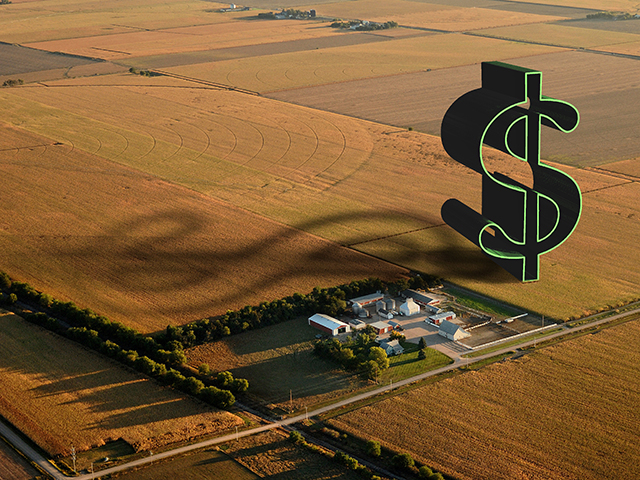Farmland Price Transparency
Land Values - Farmland Price Transparency
Every year, just 1 to 2% of agricultural land changes hands. What that land sells for can be public information or, in nondisclosure states such as Texas, sealed. Justin Bierschwale, an appraiser and president of the Texas chapter of the American Society of Farm Managers and Rural Appraisers (ASFMRA), says working in a nondisclosure state really underscores the value of relationships.
"In Texas, it's a tight group when you talk about who can disclose actual land prices," he says. As a general rule, though, Bierschwale says when it comes to agricultural land, listing prices are not usually too far out in left field. "A good rule of thumb is that 80% of that list price is the bottom of the sales price range for a property. You might not get it for that, but it gives you an understanding," he explains.
The rules are different when it comes to recreational land, though. Here, price variation can be wide, and the appraiser says purchases are more emotions-based. For that reason, recreation land starts higher and often stays on the market longer waiting for that perfect buyer.
VIEW OF A MARKET ANALYST
In Illinois, there are no laws against disclosure of sales prices on agricultural land. But, that doesn't mean it's easy to get real-time data. Ray Brownfield, a 55-year veteran of the farmland market and owner of Land Pro, a farm brokerage and management company in the state, says it takes a lot of time to research sales without all of the tools industry experts have available to them.
He notes it's important sellers and buyers differentiate between appraisers and market analysts. While an appraiser is great for valuing land, a broker goes beyond the data and brings a sense of what is going on in particular communities that might boost sales prices -- or if you're a buyer, get you a better deal.
"It's our job to know our market and to be able to help both buyers and sellers reach their individual goals. A market analysis is an opinion of value based on a lot of sales data and with an eye toward what a particular market is doing," Brownfield says.
In private-treaty sales, parties are not supposed to disclose who the buyer or seller was, or the price, until a deed is recorded. At an auction, everyone generally knows what the land sold for when they walk away. Online auctions have slowed down the reveal at times, but the rules are the same: Legally and ethically, once it closes, it's public knowledge.
Brownfield stresses it's important to understand a market price is not the same as a value on which lenders set equity levels and establish loans.
P[L1] D[0x0] M[300x250] OOP[F] ADUNIT[] T[]
"In the case of equity and collateral for a loan, it's important to know what you're bringing to the table in terms of the value of land. Lenders generally have their own appraisers on staff, or you can retain an appraiser yourself to be sure your land is correctly valued."
THE VALUE OF LAND SURVEYS
One of the most common tools in the agricultural land business today is the survey. Todd Kuethe, Purdue associate professor and author of the Purdue Farmland Value and Cash Rents Survey, says surveys show trends and provide current sales and rental rates.
Asked if surveys like those done by Purdue, the ASFMRA or the USDA provide true transparency in the land market, Kuethe believes they do. Surveys, he says, are reliable largely because of the respondents.
"These are generally surveys of experts in the area. The USDA survey goes directly to landowners, but most of the others, including ours at Purdue, pinpoint experts in the field, brokers, appraisers, professional farm managers, rural land lenders, Extension and some landowners. This is not a big universe to start with, but these are people who follow the data consistently. These are people with truly valuable information to contribute, and they have good coverage of their areas of expertise."
Asked if pricing land is more art or science, Kuethe says it's really a little of both. "I like to say that all models are wrong, but some are useful. Both appraisal and empirical models have things they don't anticipate, don't know or can't measure. They are all a combination of art and science."
With farmland, Kuethe notes there are tremendous variables to the point that any particular sale is not informative of the next. "Just knowing what a parcel next to me sold for is not going to tell me what I need to know about the specific value of my land. We often gravitate to high-profile sales as indicators, but they are not usually representative."
GOING ONLINE FOR DATA
Online land price applications using public data and what may be called "science-driven intelligence" are gaining respect in the community of appraisers, economists and marketers. But, like anything else, they are a tool, not the final answer.
Kuethe says sites like AcreTrader, AcreValue or CIBO reveal patterns over time, but valuation always comes down to what the land is worth in today's market and what it will be worth in the future. At the end of the day, the economist concludes, the buyer ultimately makes the decision about what any parcel of land is worth.
"When you go to an auction, the bidders justify price based on their own purposes. Whatever is paid that day by that winning bidder is what that land is worth.
"We can give you ranges, we can tell you if the land is priced over its earning potential, but we can't tell you what it's worth to an individual buyer. That is where the market comes in."
FOR MORE INFORMATION
> Bierschwale Land Co.: www.bierschwalelandco.com
> Land Pro: www.landprollc.us
> Purdue Agricultural Economics Reports:
ag.purdue.edu/agecon/Pages/Purdue-Agricultural-Economics-Report-Archive.aspx
> USDA Land Values Survey: www.nass.usda.gov/Publications/Todays_Reports/reports/land0820.pdf
[PF_1220]
(c) Copyright 2020 DTN, LLC. All rights reserved.



